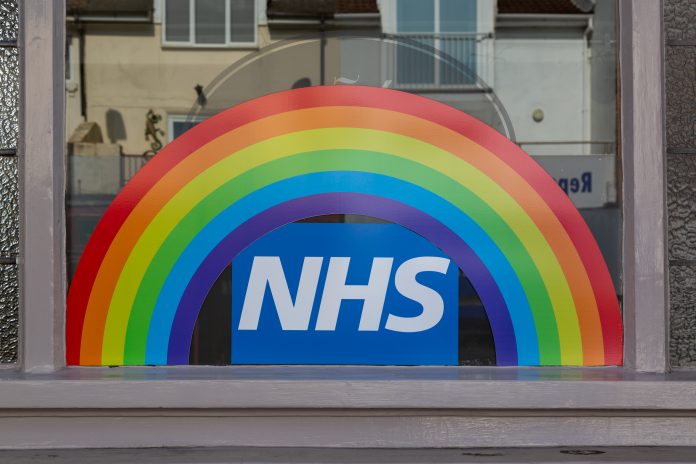David Newell, Director of Health at Gemserv, counts the true cost of saving the NHS in light of COVID 19
While we all played our part in reducing pressure on our health service, the pandemic has undoubtedly taken its toll on the NHS over the course of the past two years. From thinking twice about visiting a doctor for more “manageable” conditions, to refraining from visiting A&E for more pressing concerns, many patients took a step back to allow the NHS to focus on treating those with COVID. Since the proliferation of COVID-19, a number of variants have followed, meaning more and more resources have been redirected from their primary purposes. Although the case numbers reported in the media throughout the pandemic have been alarming, they don’t paint an accurate picture of the true impact of COVID, on both the public and the NHS.
Joining the waitlist
While the headlines continued to keep count of cases, the unpublicised reality is that the prolonged redirection of NHS services is, and has been, directly impacting the nation’s life expectancy. Leaving patients in the lurch can pose a bigger future challenge than the pandemic itself, if we don’t take immediate action.
Waiting for an appointment is part and parcel of all public healthcare systems, and the waiting time is usually dependent on demand and the clinical urgency of their treatment. Keeping patients waiting, however, comes with a direct clinical and financial impact. From a clinical standpoint, the longer a patient has to wait for treatment, the greater the chances of diagnosis delay, which, in turn, increases clinical complexity, procedure and recovery times. In extreme cases, this delay can deteriorate the patient’s quality of life, or even cause permanent reductions in life expectancy. Delaying a patient’s treatment is also likely to result in an increased number of GP and hospital visits, putting the health service under further financial strain.
To avoid delays in treatment, the NHS has established standards for elective and cancer care. The NHS standard for elective care states that 92% of people waiting for treatment should wait no longer than 18 weeks between their first referral for their first treatment. While NHS England introduced a policy in 2013/14 mandating that no patient should wait more than 52 weeks between first referral to first treatment, this standard has not been met since 2016. Sadly, the standard continued to decline until the onset of the pandemic when it plummeted. The number of patients on the waitlist for elective care in February 2020 was 4.43 million, with a performance of 83% against the 18-week target.
During the pandemic, waiting times dropped to the lowest level ever, with two-thirds (66%) of patients receiving their first treatment less than 18 weeks after first diagnosis by September 2021. With a pause on non-COVID treatments, the waiting list grew to a staggering 6 million patients by September 2021.
When it comes to cancer care, the national target used to measure performance is clear; a minimum of 85% of patients need to commence treatment within 62 days of urgent referral, and once the patient has received their diagnosis, treatment must commence within 31 days. This standard was upheld and even surpassed between August 2018 and February 2020, with 96% of patients meeting the 31-day target. As the NHS mounted an emergency response to the pandemic, however, it proved impossible to maintain these performance levels. In September 2021, just 68% of patients received treatment within 62 days.
Why COVID case numbers don’t reflect the full story
The daily case numbers reported throughout the peak of the pandemic were frightening, but the fact of the matter is, they were not wholly accurate, and largely detracted from other areas of our healthcare crisis. As more and more of the population were counted towards the UK’s COVID cases, millions of patients were, and likely still are, yet to enter the system. These “missing patients” can be those that have previously avoided seeking healthcare, those that have been unable to enter the system via primary care due to the redirection of GP resources or those that have been removed from existing patient lists but still require care. They could also be patients that are yet to be diagnosed, including a new cohort of long-COVID patients.
It’s unclear when and how these “missing patients” will enter the system, but it is inevitable that they will at some point. Estimates tell us that up to 740,000 urgent GP referrals were missing for suspected cancer during the pandemic, and over 7 million missing referrals for elective care over the same time period. If just half of these missing referrals return to the NHS and activity only grows within the parameters set out pre- pandemic, the waiting list could reach 12 million by March 2025.
What can be done to save the NHS?
Even pre-pandemic, the demand for healthcare and supply of resources was not keeping pace with demand, and the backlog has steadily increased. To resolve pre-existing and COVID-induced challenges, we need to reduce the demand for care, and simultaneously increase resources and improve the efficiency of those resources.
System-wide change is needed to maximise the use of existing pockets of capacity. This means that integrated care systems (ICSs) must be empowered to hold the authority to direct, manage and validate waitlists for a wider benefit, and to prioritise waiting lists by order of clinical need, not just time of waiting.
In the coming months, the true cost of COVID will be felt more keenly, not just in case numbers or long- COVID, but in the implications of delayed treatments. To be in with a chance of saving our NHS, we need to shift towards a long-term prevention approach, focusing on improving the overall health of our population.











